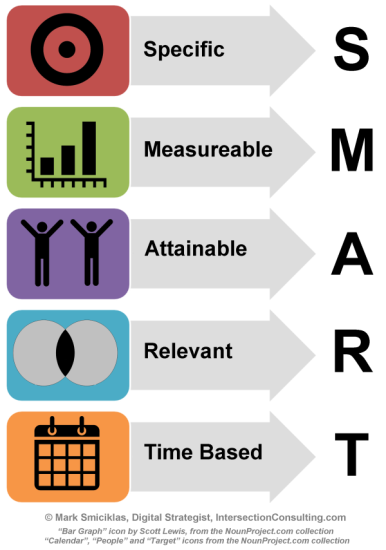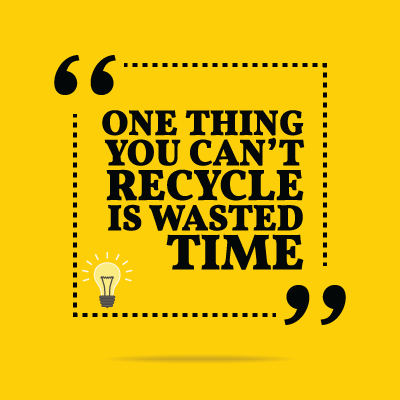How often it seems to you like there’s never enough time in the day to fit everything in?
You probably work more than 10 hours, through lunch and breaks, and still, miss deadlines?
If your answer is “Yes”, then it’s high time to think about time management!
Time management is the act or process of planning and exercising conscious control over the amount of time spent on specific activities, especially to increase effectiveness, efficiency, or productivity.
To achieve your short and long-term goals, time management is a great tool for prioritizing tasks, planning projects and meetings.
So how to stop wasting time and start enjoying the working process?
In this article we gathered the best tips and tricks used by many experienced IT professionals and large companies.
Planning is Key: Organize your to-do list.
Keep always on hand the necessary planning “tools”. Most of us keep a tablet, smartphone, or laptop with us during most time of the day and night. Each of these devices has some form of time management tools, some of them are built-in but you can always install the latest apps from stores or repositories. Another option is to write down in your diary or organizer using your favorite pencils or markers, and once the task is complete CROSS IT OUT!
Psychologists state that people feel much satisfied when they draw a line on the completed task rather than putting a tick.
Don’t let your lists get too long or they will become unruly; these should be categorized and broken down before that happens, if possible. The important takeaway is getting your items documented somewhere so you can get them out of your head and focus on the task at hand.
If you can’t plan, just track
If you can’t plan anything now, don’t worry, you can do it later. Just track whatever you do on a paper, Excel sheet or use a task management software. Update the list every two hours, or at least in the end of the day on in the beginning. This will help you to find common interrupters and recurring tasks, this way you can plan things for future. Even one week of day to day time tracking can bring a light on how we live.
Look at your time journal and try to find out things that don’t really need to be done, things that could be done by someone else, work that can be done more effectively or quickly, actions that wastes others’ time etc.
Split difficult tasks into bite-sized pieces
People usually avoid difficult tasks. Break them down into smaller steps. Complete manageable chunks and soon you will notice that the problem is resolved. A very helpful approach is to add “how to test” notes for each task. This will setup a micro goal and will help in determining task completion. Of course, if these tests can be automated time on repeated tests will be reduced.
Multi-tasking Doesn’t Work
In a recent article from the Huffington Post, Zheng Wangs, a researcher and assistant professor of communication at Ohio State University, offered his thoughts on multi-tasking:
“There’s a myth among some people that multitasking makes them more productive. But they seem to be misperceiving the positive feelings they get from multitasking. They are not being more productive — they just feel more emotionally satisfied from their work.”
People are most effective when they concentrate on one thing at a time. It’s often said that it’s better to finish one job than to start five.
Prioritize
Look at your lists and identify your top priorities. Tackle your most important or thought-heavy tasks at the point of your day where you are most mentally engaged and alert.
For many people, that time is the first thing in the morning, but for others, it could be when everyone leaves the office at 5:30.
Set Goals and Deadlines
Tasks and projects need deadlines and goals–these are the way for you to measure your forward progress and success.
Deadlines are critical to the outcome of any project or task. If not set in a realistic timeframe and managed well they will become a major source of stress. Not giving you or your team enough time can result in extreme pressure on all parties involved.
Always give yourself a little more time than you think you may need in order to avoid unnecessary setbacks. Sticking to your deadlines will help you get more done faster.
Set SMART Goals or goals that are the following:
Set both long- and short-term goals. It’s easy to get lost in the microcosm of the daily–goals help keep things in context and help illustrate the bigger picture. Consider them the roadmap of your career and a necessary part of your day-to-day work. If you want to be successful you need to set and then strive to reach your goals. It gives you both direction and a focus on what’s important.
The bottom line: always have clearly defined goals, objectives, and deadlines.
Make the Most of the Time You Have
All of us have some time in the day that can be better used–for example, commuting, exercising, or showering. Take this time to visualize your day, think about upcoming goals or projects. This is also a great time to prioritize some of the items on your list.
Don’t Procrastinate
Procrastination will literally get you nowhere, so don’t put off important tasks or wait until the last minute to put together your presentation. As humans it is part of our nature to avoid unpleasant tasks–to avoid this, try using the reward system. Plan something fun or relaxing after a difficult task, like take a ten-minute break and go for a walk or work on something that is more compelling to you.
Recharge Your Batteries. Don’t hurry!
Be Quick but Don’t Hurry. Eat right, exercise regularly, and get enough sleep. When we’re healthy and all is well this often is taken for granted–it sounds like a no-brainer yet so many of us find it difficult to do.

Eliminate Distractions
No matter where you work, distractions abound in the form of email, social media, meetings or coworkers wanting to chat about last night’s episode of “The Newsroom,” current events or their children.
What can you do to limit these distractions and concentrate on the task at hand? If you’ve taken the time to monitor how your day is spent you’ll know right where to start, but some other things you can do include, putting your phone on silent during your work hours or setting up specific intervals for the checking of email. Some people use noise-canceling headphones or listen to music to drown out the other office sounds, while others use a do not disturb sign on their office or cube.
Delegate Responsibilities
Failure to delegate properly can be a career-limiting factor. There are 24 hours in the day and each of us is only one person. Founder of Virgin Group and billionaire adventurer Richard Branson had this to say, “I learned to delegate from a young age. Actually removing myself from the office has helped me look for the next big venture.” Regardless of whether or not you think you can do it better, some things need to be delegated so you can focus on your top priorities or take on new responsibilities.
Delegating is not a set-and-forget process, it requires thought and follow-through. Here are six helpful steps to take when delegating tasks and projects:
Know who your go-to people are. What are their strong/weak points?
- Set goals and let expectations be known.
- Set checkpoints and deadlines
- Let them know what resources are available to them.
- Be available for questions. Stop by at checkpoints and see how the task is coming along.
Allow a little more time than necessary. The amount of time it takes you to do a task is often different than someone who doesn’t regularly do the same task.
Delegating is a daily part of IT management and core to better time management, offering a huge increase in your productivity.
Do not hesitate to ask friends or colleagues for an advice
Almost every IT project involves risks; they are either hidden or visible in the beginning. Developers have to resolve them. Working on any of them, even a small risk, can take days or even weeks. To avoid this time spending just take the advice or help of your colleague or friend. I have many examples of how this rule reduced time on difficult tasks and prevented project failures. An example from my experience: customers of our recent project required an extra safety for applications from possible cracks. One part of the protection was to download a component from the server and load this DLL to the application without writing to the disk. Even after two hours of research, I couldn’t find any useful information. I paused for a moment and tried to recall someone who could help me with it. I asked a friend of mine who has worked as a developer in another company and he helped me. He sent me a link to a tutorial that I was looking for and the problem was resolved.
Sources: cio.com, habrahabr.ru, codeproject.com






